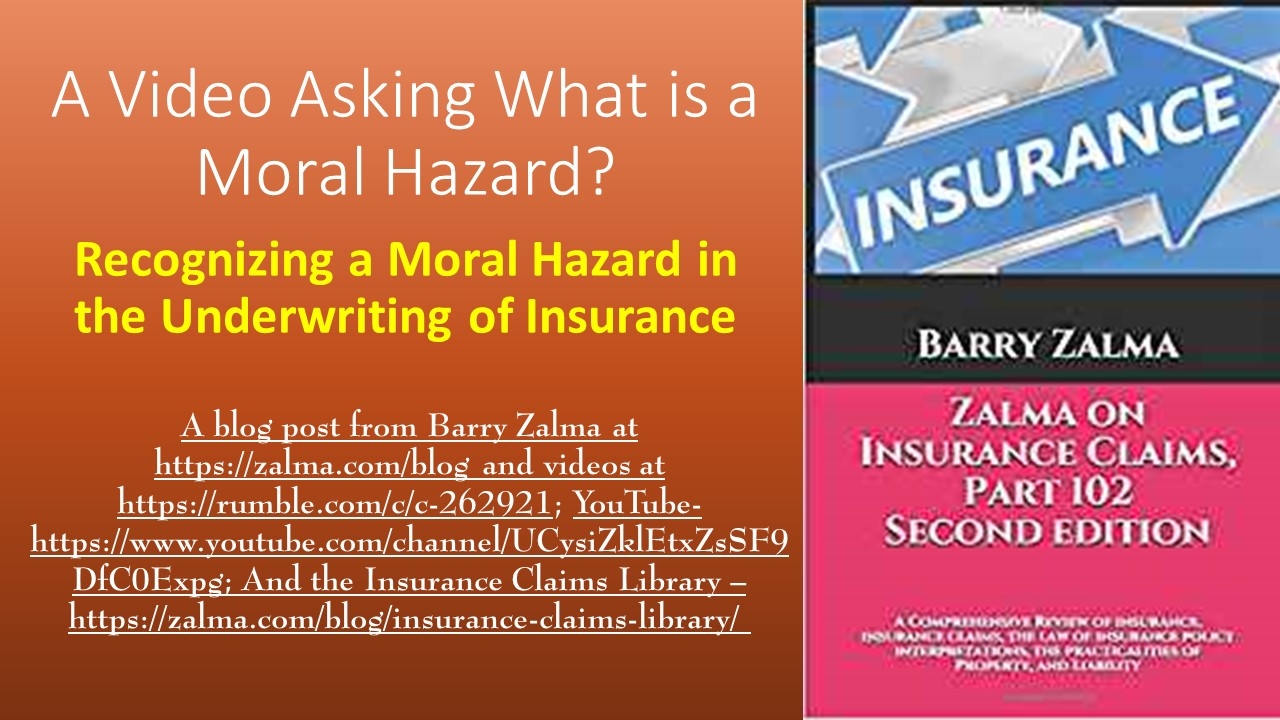-
News Feed
- EXPLORE
-
Pages
-
Groups
-
Events
-
Blogs
-
Marketplace
-
Offers
-
Jobs
-
Developers
A Video Asking What is a Moral Hazard?

Recognizing a Moral Hazard in the Underwriting of Insurance
Read the full article at https://www.linkedin.com/pulse/video-what-moral-hazard-barry-zalma-esq-cfe and se the full video at https://rumble.com/vhxz37-a-video-about-what-is-a-moral-hazard.html?mref=6zof&mrefc=2 and at https://youtu.be/BpVifhr1lXc and at https://zalma.com/blog plus more than 3750 posts.
The moral hazard is the increase in uncertainty caused by personal acts of individuals. These acts may contribute to the probability or severity of loss. The individual creating the problem may be the policyholder or another person. In either case the chance of loss is increased. A moral hazard may be present in every line of insurance. No underwriter can ignore it without incurring an increased risk of substantial loss. The moral hazard is very difficult to detect and therefore very dangerous to the insurer.
“Moral hazard” is the term used to denote the incentive that insurance can give an insured to increase the risky behavior covered by the insurance. [May Dept. Stores, 305 F.3d 597, Erickson-Hall Constr. Co. v. Scottsdale Ins. Co. (S.D. Cal., 2019)]
Some underwriters think only of the intentional fraud when they use the term “moral hazard."
We are 100% funded for October.
Thanks to everyone who helped out. 🥰
Xephula monthly operating expenses for 2024 - Server: $143/month - Backup Software: $6/month - Object Storage: $6/month - SMTP Service: $10/month - Stripe Processing Fees: ~$10/month - Total: $175/month
- Art
- Causes
- Crafts
- Crime
- Dance
- Drinks
- Film
- Finance
- Fitness
- Food
- Games
- Gardening
- Health
- Home
- Literature
- Music
- Networking
- Paranormal
- Other
- Politics
- History
- News
- Party
- Science
- Religion
- Shopping
- Sports
- SyFy
- Politically Incorrect
- Philosophy
- Theater
- Technology
- Wellness



